Complete Solutions to C.U.Q. of chapter SYSTEM OF PARTICLES of Class 11 book with complete answers and questions
| Class 11 | PHYSICS |
| Chapter | SYSTEM OF PARTICLES |
| NARAYANA | C.U.Q. |
| Number Of Questions | 83 |
| Academic Year | 2023-24 |
When a force is applied on a body, Newton's second law is applicable to
View SolutionCentre of mass of the earth-moon system lies
View SolutionA circular plate of diameter d is kept in contact with a square plate of edge d as shown in figure. The densit of the material and the thickness are same
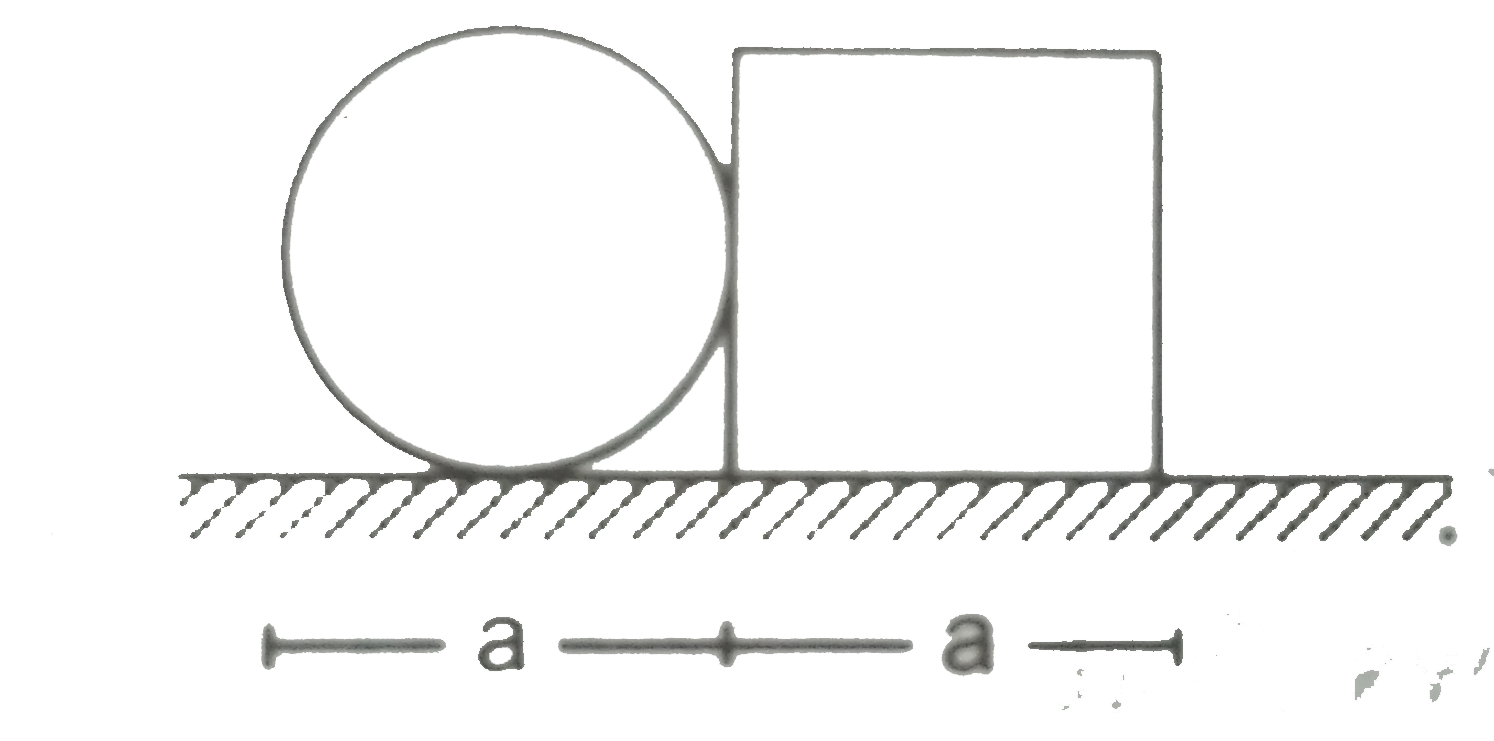 . Everywhere. The centre of mass of the composite system will be
. Everywhere. The centre of mass of the composite system will be
View SolutionA uniform straight rod is placed in vertical position on a smooth horizontal surface and released. As the rod is in motion, the centre of mass moves
View SolutionA uniform square plate and a disc having same mass per unit area are kept in contact as shown in Fig. The side of square and diameter of circle are both equal to `L`. Locate the position of centre of mass of the system w.r.t. the centre of the square.
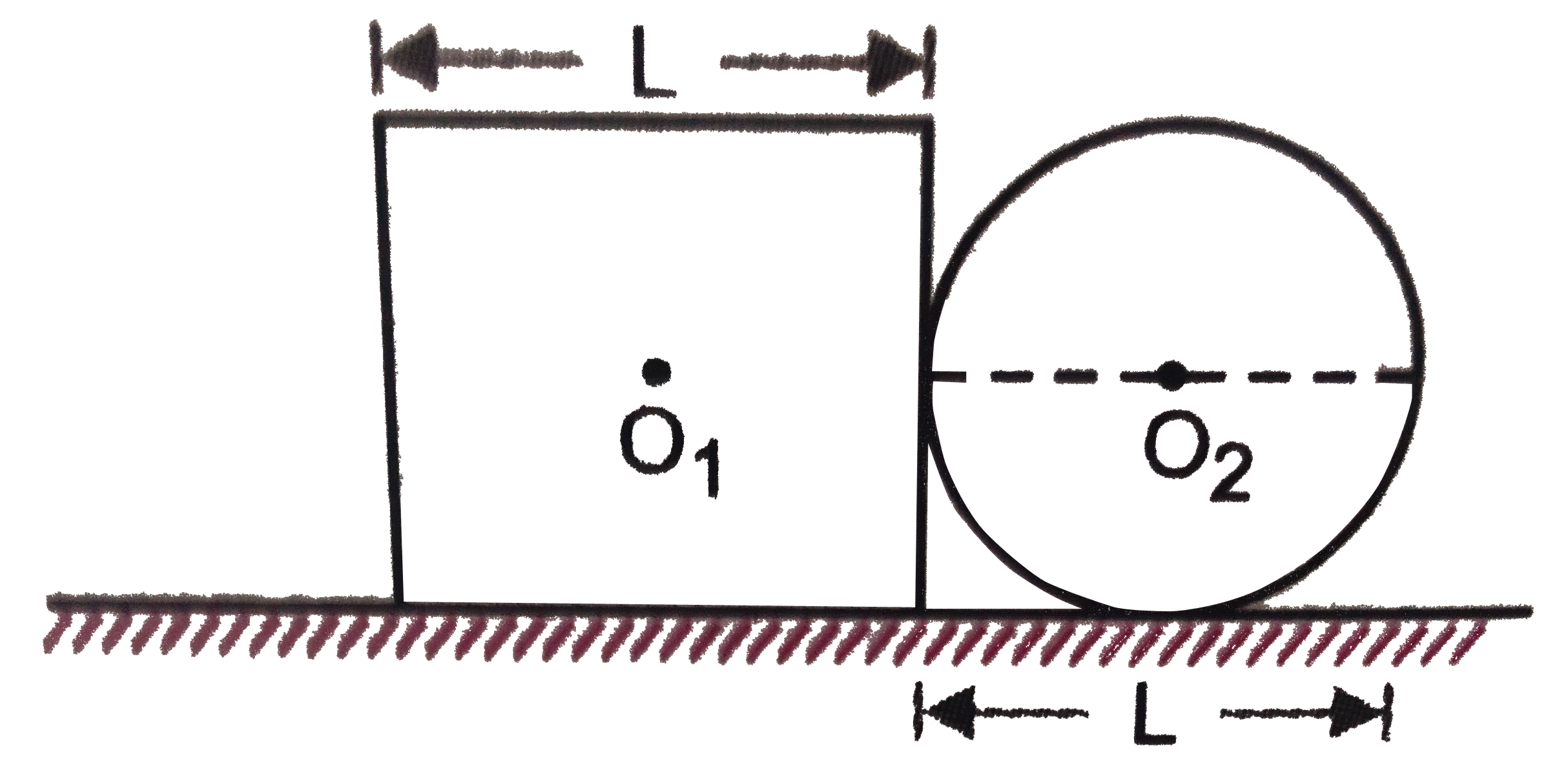
View SolutionTwo balls are thrown simultaneously in air. The acceleration of the centre of mass of the two balls while in air
View SolutionConsider a two particle system with particles having masses `m_1 and m_2` if the first particle is pushed towards the centre of mass through a distance d, by what distance should the second particle is moved, so as to keep the center of mass at the same position?
View SolutionIf `vec P xx vec Q= vec R, vec Q xx vec R= vec P` and `vec R xx vec P = vec Q` then
View SolutionWhich of the following equation is wrong
View SolutionThe following pair of physical quantities are analogous to one another in translatory motion and rotatory motion.
View SolutionThe correct relation of the following is
View SolutionTwo particles `p` and `q` located at distances `r_p` and `r_q` respectively from the centre of a rotating disc such that `r_p gt r_q`.
View SolutionWhen a constant torque is applied on a rigid body, then
View SolutionIdentify the increasing order of angular velocities of the following
(a) earth rotating about its own axis
(b) hours hand of clock
(c) seconds hand of a clock
(d) fly wheel of radius `2m` making `300 rps.`
View SolutionThe direction of following vectors is along the line of axis of rotation
View SolutionA particle is moving along a fixed circular orbit with uniform speed. Then true statement from the following is
View SolutionClass `I` lever is that in which
View SolutionIf force vector is along X-axis and radius vector is along Y-axis then the direction of torque is
View SolutionDuring rotation of a body, the position vector is along X-axis and force vector is along Y-axis, The direction of torque vector is
View SolutionIf the direction of position vector `vec r` is towards south and direciton of force vector `vec F` is towards east, then the direction of torque vector `vec tau` is
View SolutionWhich of the following is wrong
View SolutionA circular disc is rotated along clockwise direction in horizontal plane. The direction of torque is
View SolutionMagnitude of torque is maximum in the following case
View SolutionA constant resultant torque rotates a wheel about its own axis. Then true statement of the following is
View SolutionA wheel is free to rotate about its own axis without friction. A rope is wound around the wheel. If other end of rope is pulled with a constant force, then true statement from the following is
View SolutionThe following pairs of physical quantities are not analogous to each other in translatory motion and rotational motion
View SolutionThen moment of inertia of a rigid body depends on
(A) mass of body
(B) position of axis of rotation
(C) time period of its rotation
(D) angular velocity of the body
View Solution`I_1, I_2` are moments of inertia of two solid spheres of same mass about axes passing through their centres. If first is made of wood and the second is made of steel, then
View SolutionA uniform metal rod is rotated in horizontal plane about a vertical axis passing through its end at uniform rate. The tension in the rod is
View SolutionA boiled egg and a raw egg of same mass and size are made to rotate about their own axis. If `I_1` and `I_2` are moments of inertia of boiled egg and raw egg, then
View SolutionRaw and boiled eggs are made to spin on a smooth table by applying the same torque. The egg that spin faster is
View SolutionMoment of inertia of body depends upon
View SolutionOf the two eggs which have identical sizes, shapes and weights, one is raw and other is half boiled. The ratio between the moment of inertia of the raw to the half boiled egg about central axis is:
View SolutionThe radius of gyration of a rotating metallic disc is independent of the following physical quantity.
View SolutionA brass disc is rotating about its axis. If temperature of disc is increased then its
View SolutionThe radius of gyration of a rotating circular ring is maximum about following axis of rotation
View SolutionA moment of inertia of a thin circular plate is minimum about the following axis
View SolutionA ring of mass `m` and radius `r` is melted and then moulded into a sphere. The moment of inertia of the sphere will be
View SolutionTwo circular discs are of same thickness. The diameter of `A` is twice that of `B`. The moment of inertia of `A` as compared to that of `B` is
View SolutionThe moment of inertia of a thin square plate `ABCD` of uniform thickness about an axis passing through the centre `O` and perpendicular to the plane of the plate is
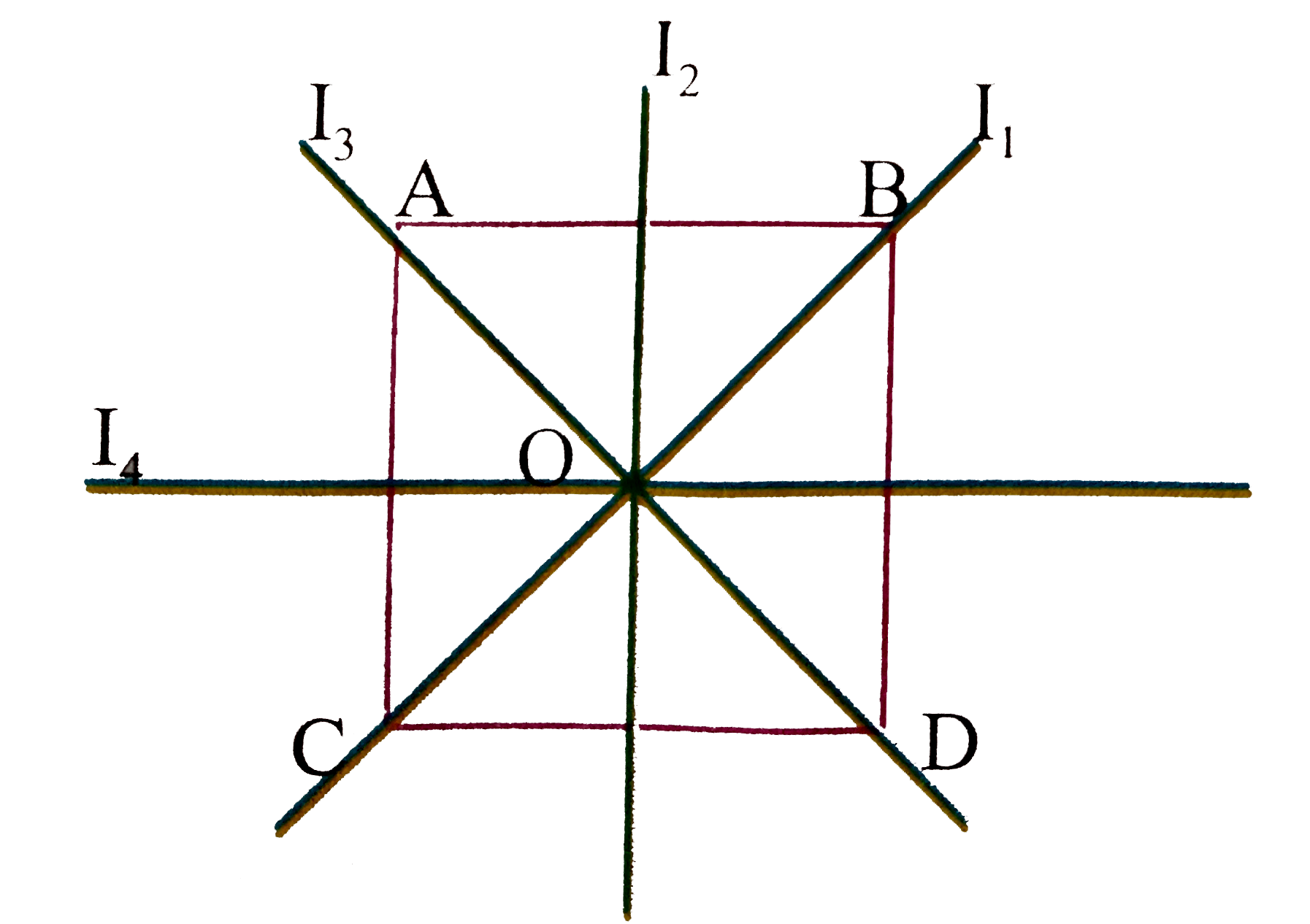
`(a) I_(1)+I_(2)`, `(b) I_(2)+I_(4)`
`2I_(1)+I_(3)`, (d) `I_(1)+2I_(3)`
View SolutionIdentify the correct order in which the ratio of radius of gyration to radius increases for the following bodies.
(I) rolling solid sphere (II) rolling solid cylinder
(III) rolling hollow sphere
(IV) rolling hollow sphere
View SolutionIdentify the increasing order of radius of gyration of following bodies of same radius
(I) About natural axis of circular ring
(II) about diameter of circular ring
(III) About diameter of circular plate
(IV) about diameter of solid sphere
View SolutionIdentify the decreasing order of radius of gyration of following bodies of same radius
(I) About diameter of circular ring
(II) About diameter of circular plate
(III) About tangent of circular ring `bot^(r)` to its plane
(IV) About tangent of circular plate in its plane
View SolutionThree particles each of mass `m` are placed on the vertices of an equilateral triangle of length `L`. Find the `M.I`.
(`a`) about an axis passing through
(`i`) one particle and perpendicular to the plane
(`ii`) mid-point of the side of triangle and `bot^(ar)` to the plane
(`iii`) center of triangle and `bot^(ar)` to the plane
(`b`) (`i`) an axis coinciding with side of triangle
(`ii`) about median of triangle
View SolutionThree dense point size bodies of same mass are attached at three vertices of a light equilateral triangular frame. Identify the decreasing order of their moment of inertia about following axis.
(I)Passing through any side
(II) Passing through opposite corners
(III) `bot^(r)` bisector of any side
(IV)` bot^(r)` to the plane and passing through any corner
View SolutionA motor car is moving in a circular path with uniform speed `v`. Suddenly the car rotates through an angle `theta`. Then, the magnitude of change in its velocity is
View SolutionAn electric motor rotates a wheel at a constant angular velocity `(omega)` while opposing torque is `tau`. The power of that electric motor is
View SolutionA constant power is suppied to a rotating disc. The relationship between the angular velocity `(omega)` of the disc and number of rotations `(n)` made by the disc is governed by
View SolutionAn ice block is in a trough which is rotating about vertical axis passing through its centre. When ice melts completely, the angular velocity of the system

View SolutionA circular disc is rotating about its own axis, the direction of its angular momentum is
View SolutionA ballet dancer is rotating about his own vertical axis on smooth horizontal floor. `I, omega, L, E` are moment of inertia, angular velocity, angular momentum, rotational kinetic energy of ballet dancer respectively. If ballet dancer stretches himself away from his axis of rotation, then
View SolutionIf polar ice caps melt, then the time duration of one day
View SolutionA hollow sphere partly filled with water has moment of inertia `I` when it is rotating about its own axis at an angular velocity `omega`. If its angular velocity is doubled then its moment of inertia becomes
View SolutionIf most of the population on earth is migrated to poles of the earth then the duration of a day
View SolutionThe law of conservation of angular momentum is obtained from Newton's II law in rotational motion when
View SolutionIf earth shrinks then the duration of day
View SolutionA circular disc is rotating in horizontal plane about vertical axis passing through its centre without friction with a person standing on the disc at its edge. If the person gently walks to centre of disc then its angular velocity
View SolutionA ballet dancer is rotating about his own vertical axis. Without external torque if his angular velocity is doubled then his rotational kinetic energy is
View SolutionThe following motion is based on the law of conservation of angular momentum
(A) rotation of top (B) diving of driver
(C) rotation of ballet dancer on smooth horizontal surface
(D) a solid sphere that rolls down on an inclined plane
View SolutionTwo bodies with moment of inertia `I_1` and `I_2 (I_2 gt I_1)` are rotating with same angular momentum. If `K_1` and `K_2` are their K.E.s, then
View SolutionA solid sphere is rotating in free space. If the radius of the sphere is increased keeping mass same which one of the following will not be affected?
View SolutionA circular wheel is rotating in horizontal plane without friction about its axis. If a body is gently attached to the rim of the wheel then following is false.
View SolutionA uniform metal rod of length `L` and mass `M` is rotating about an axis passing throuth one of the ends perpendicular to the rod with angular speed `omega`. If the temperature increases by `t^@C` then the change in its angular velocity is proportional to which of the following ? (Coefficient of linear expansion of rod `=alpha`)
View SolutionA gymnast standing on a rotating stool with his arms outstretched, suddenly lowers his arms
View SolutionAngular momentum of the particle rotating with a central force is constant due to
View SolutionSolid sphere, hollow sphere, solid cylinder and hollow cylinder of same mass and same radii are simultaneously start rolling down from the top of an inclined plane. The body that takes longest time to reach the bottom is
View SolutionSolid sphere, hollow sphere, solid cylinder and hollow cylinder of same mass and same radii are simultaneously start rolling down freely on an inclined plane. The body with maximum acceleration is
View SolutionIn the case of following rolling body translatory and rotational kinetic energies are equal for
View SolutionA disc is rolling (without slipping) on a horizontal surface. `C` is its center and `Q` and `P` are two points equidistant from `C`. Let `V_(P), V_(Q)` and `V_(C)` be the magnitude of velocities of points `P, Q` and `C` respectively, then
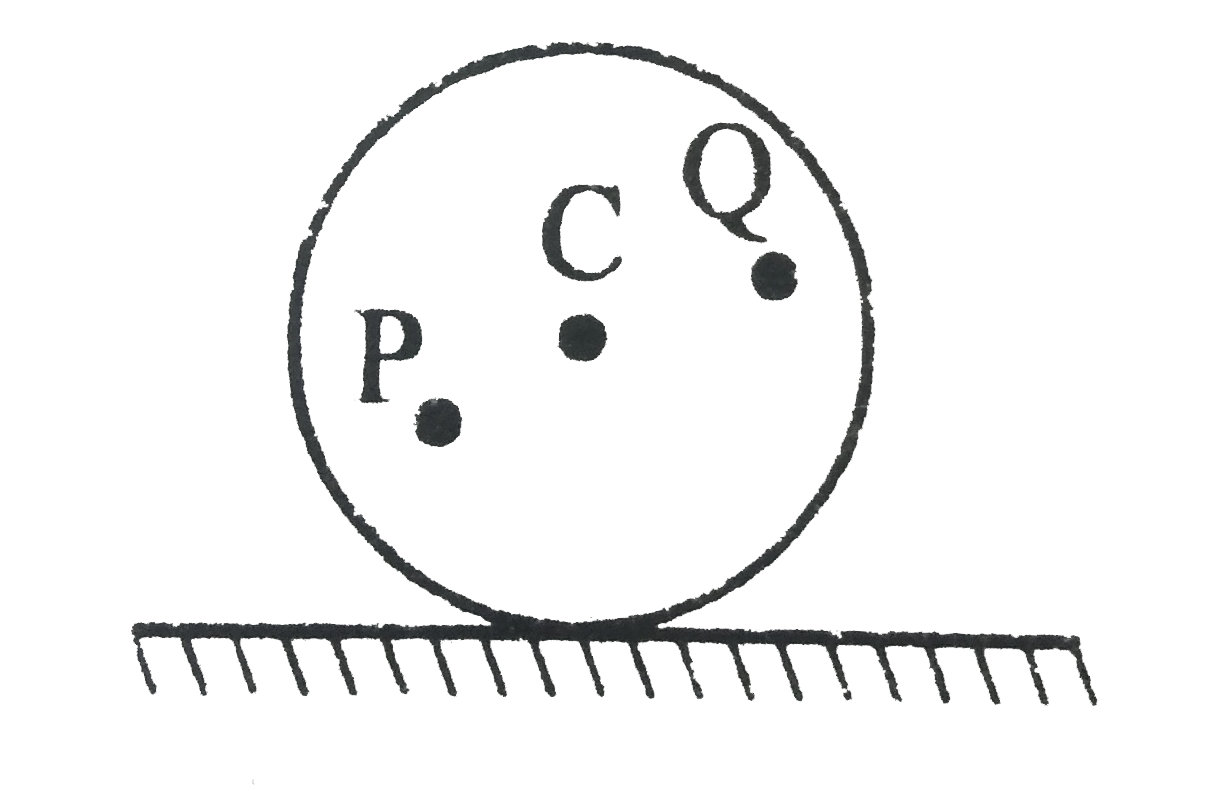 .
.
View SolutionA particle performing uniform circular motion gas angular momentum `L`. If its angular frequency is double and its kinetic energy halved, then the new angular momentum is :
View SolutionIf `V` is velocity of centre of mass of a rolling body then velocity of lowest point of that body is
View SolutionIf the velocity of centre of mass of a rolling body is `V` then velocity of highest point of that body is
View SolutionIf `x` is ratio of rotational kinetic energy and translational kinetic energy of rolling body then following is true
View SolutionA body is freely rolling down on an inclined plane whose angle of inclination is `theta`. If `a` is acceleration of its centre of mass then following is correct
View SolutionA child is standing with folded hands at the center of a platform rotating about its central axis. The kinetic energy of the system is `K`. The child now stretches his arms so that the moment of inertia of the system doubles. The kinetic energy of the system now is
View SolutionA yo-yo is placed on a rough horizontal surface and a constant force `F`, which is less than its weight, pulls it vertically. Due to this
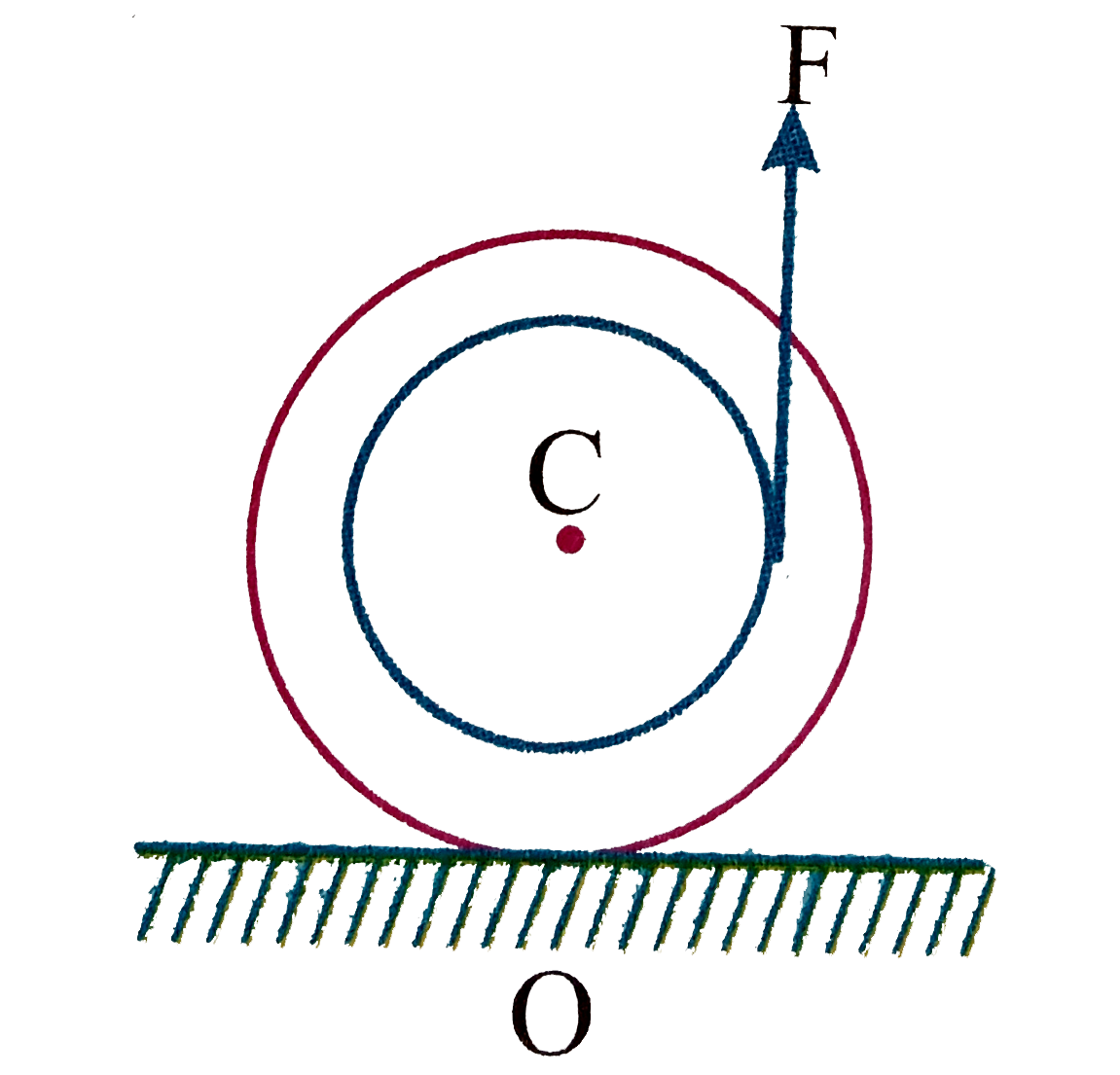
View SolutionWhen the following bodies of same radius starts rolling down on same inclined plane, identify the decreasing order of their times of descent
(I) Solid cylinder , (II) hollow cylinder
(III) hollow sphere ,(IV) solid sphere
View SolutionWhen the following bodies having same radius starts rolling down on same inclined plane, identify the increasing order of their accelerations
(I) hollow cylinder ,(II) Solid cylinder
(III) solid sphere, (IV) hollow sphere
View SolutionWhen a ring is rolling and `V_4` are velocities of top most point, lowest point, end point of horizontal diameter, centre of ring respectively, the decreasing order of these velocities is
View SolutionThe increasing order of fraction of total kinetic energy associated with translatory motion of the following rolling bodies is
(I) circular ring ,(II) circular plate
(III) solid sphere ,(IV) hollow sphere
View Solution`A` and `B` are two solid spheres of equal masses. A rolls down an inclined plane without slipping from a height `H`. `B` falls vertically from the same height. Then on reaching the ground.
View SolutionA solid sphere, a hollow sphere and a ring are released from top of an inclined plane (frictionless) so that they slide down the plane. Then maximum acceleration down the plane is for (no rolling)
View SolutionA sphere cannot roll on
View Solution
C.U.Q. questions and complete solutions for chapter SYSTEM OF PARTICLES of NARAYANA PHYSICS (HINGLISH) of Class 11